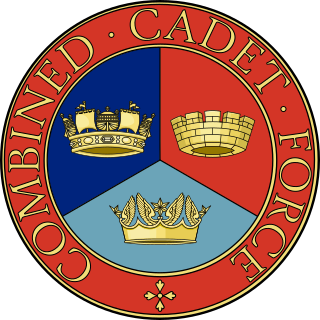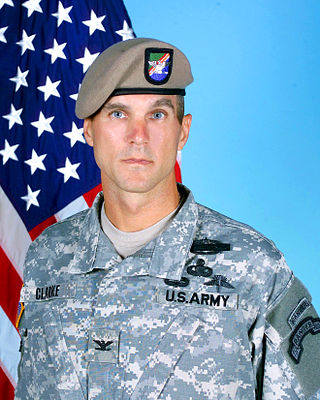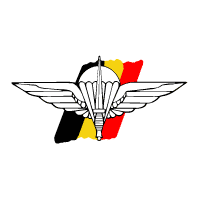The British Armed Forces award a range of Parachutist Badges to those qualified as military parachutists. The version awarded depends largely on the unit or role that the individual fills following qualification.
The British Armed Forces award a range of Parachutist Badges to those qualified as military parachutists. The version awarded depends largely on the unit or role that the individual fills following qualification.

During World War II with forming of the first British Airborne units parachute training was a 12-day course carried out at the No. 1 Parachute Training School, RAF Ringway. Recruits initially jumped from a converted barrage balloon and finished with five parachute jumps from an aircraft.[ citation needed ] Anyone failing to complete a parachute jump was returned to his old unit (known as "returned to unit" or "RTU"). At the end of the course, new Paras were presented with their maroon beret and parachute wings and posted to a parachute battalion.[ citation needed ]
Currently British military personnel must complete the Basic Parachute Course, which is held by No 1 Parachute Training School at RAF Brize Norton, a 9-jump course attended by personnel from all branches of the UK Armed Forces. Troops make each descent from a C-130 or Skyvan aircraft using the Low Level Parachute at heights of 800 ft and 1000 ft. [1] On successful completion of their nine descents, trainees are presented with their 'wings' [2] by the Officer Commanding No. 1 Parachute Training School, and return to their units as qualified parachutists.
Qualified military parachutists shall wear the Army pattern parachutist badge, a parachute with wings, to be worn on the right arm 31mm below the shoulder seam, as follows:
The British Army has three parachute qualification badges for non Special Forces qualified soldiers:

The Parachute Badge with Wings insignia, which depicts an open parachute embroidered in white flanked by a pair of wings embroidered in light blue, is only to be worn by a qualified parachutist who has subsequently been on the posted strength of a unit where they may be ordered in the course of their duties to parachute. [4] Those who do not serve with a parachute unit are permitted to wear the Parachute Badge without Wings, colloquially known as the 'Lightbulb'. [5]
The parachutist's badges for personnel of the SAS and SBS are of different designs, Special Forces Communicators attached to the SBS wear SBS pattern wings. [6] Special Forces Communicators wings are of a distinct design [7]


SAS pattern parachute wings, designed by Lieutenant Jock Lewes and based on the stylised sacred Ibis wings of Isis of Egyptian iconography depicted in the décor of Shepheard's Hotel in Cairo, are worn on the right shoulder. [8] During the second world war, after a qualifying number of active service "jumps", they were worn on the left breast above medal ribbons. [9]


Qualified RAF and RAF Regiment personnel wear a badge similar to the Army's Parachute Badge with Wings, formerly on an RAF blue-grey backing, since 1972 on navy blue; there is an RAF equivalent to the 'lightbulb'. [10] The Parachute Jump Instructor badge is categorised as a Flying Badge.

The Combined Cadet Force (CCF) is a youth organisation in the United Kingdom, sponsored by the Ministry of Defence (MOD), which operates in schools, sub divided into Royal Navy, Royal Marines, Army and Royal Air Force sections. Its aim is to "provide a disciplined organisation in a school so that pupils may develop powers of leadership by means of training to promote the qualities of responsibility, self reliance, resourcefulness, endurance and perseverance".

The Special Forces Tab is a service school qualification tab of the United States Army, awarded to any soldier completing the Special Forces Qualification Course at the U.S. Army John F. Kennedy Special Warfare Center and School, Fort Bragg, North Carolina. Soldiers who are awarded the Special Forces Tab are authorized to wear it, as well as the green beret for the remainder of their military careers, even when not serving in a Special Forces command.

A cap badge, also known as head badge or hat badge, is a badge worn on uniform headgear and distinguishes the wearer's nationality and/or organisation. The wearing of cap badges is a convention commonly found among military and police forces, as well as uniformed civilian groups such as the Boy Scouts, civil defence organisations, ambulance services, customs services, fire services etc.

A parachutist badge is a military badge awarded by the armed forces of many states to soldiers who have received parachute training and completed the required number of jumps. It is difficult to assess which country was the first to introduce such an award.

The Military Freefall Parachutist Badge is a military badge of the United States Army and United States Air Force awarded to qualified U.S. Army and U.S. Air Force personnel as high-altitude military parachute specialists.

The Parachutist Badge, also commonly referred to as "Jump Wings", is a military badge of the United States Armed Forces. Some services, such as the Marine Corps, officially refer to it as an insignia instead of a badge. The United States Space Force and United States Coast Guard are the only branches that do not award the Parachutist Badge, but their members are authorized to receive the Parachutist Badges of other services in accordance with their prescribed requirements. The DoD military services are all awarded the same Military Parachutist Badge. The U.S. Army and U.S. Air Force issue the same Senior and Master Parachutist Badges while the U.S. Navy and U.S. Marine Corps issue the Navy and Marine Corps Parachutist Insignia to advanced parachutists. The majority of the services earn their Military Parachutist Badge through the U.S. Army Airborne School.

Insignias and badges of the United States Navy are military badges issued by the United States Department of the Navy to naval service members who achieve certain qualifications and accomplishments while serving on both active and reserve duty in the United States Navy. Most naval aviation insignia are also permitted for wear on uniforms of the United States Marine Corps.

Insignia and badges of the United States Marine Corps are military "badges" issued by the United States Department of the Navy to Marines who achieve certain qualifications and accomplishments while serving on both active and reserve duty in the United States Marine Corps.

An aircrew flying badge is the badge worn on the left breast, above any medal ribbons, by qualified aircrew in the Royal Air Force, Royal Navy, British Army, Indian Air Force, Pakistan Air Force, Royal Canadian Air Force, Royal Australian Navy, Australian Army, Royal Australian Air Force, Royal New Zealand Air Force, South African Air Force and Sri Lanka Air Force. An example of a real pilot brevet is as opposite:

The uniforms of the British Army currently exist in twelve categories ranging from ceremonial uniforms to combat dress. Uniforms in the British Army are specific to the regiment to which a soldier belongs. Full dress presents the most differentiation between units, and there are fewer regimental distinctions between ceremonial dress, service dress, barrack dress and combat dress, though a level of regimental distinction runs throughout.
The 323rd Parachute Ranger Squadron or Fallskärmsjägarna is a Swedish military special operations capable airborne ranger unit specialising in long-range reconnaissance.

The maroon beret in a military configuration has been an international symbol of airborne forces since the Second World War. It was first officially introduced by the British Army in 1942, at the direction of Major-General Frederick "Boy" Browning, commander of the British 1st Airborne Division. It was first worn by the Parachute Regiment in action in North Africa during November 1942.

The tan beret, also known as a beige beret, has been adopted as official headgear by several special operations forces as a symbol of their unique capabilities.

The Royal Air Force uniform is the standardised military dress worn by members of the Royal Air Force. The predominant colours of Royal Air Force uniforms are blue-grey and Wedgwood blue. Many Commonwealth air forces' uniforms are also based on the RAF pattern, but with nationality shoulder flashes. The Royal Air Force Air Cadets wear similar uniforms.

The Special Operations Regiment is a special operations force of the Land Component of the Belgian Armed Forces. Its headquarters is located in Heverlee. It was known as the Light Brigade until 3 July 2018 when it was renamed and transformed into its current form.
A DZ Flash is a badge or patch worn by the Airborne forces of the British Army and all squadrons of the RAF Regiment. DZ stands for 'drop zone'. In RAF Regiment use, these flashes distinguish between squadrons, although within the RAF Regiment only II Squadron has a parachute capability.
The Basic Parachute Course for members of the British Armed Forces is conducted by the Parachute Training Squadron of the Airborne Delivery Wing, based at RAF Brize Norton.

Troops began wearing berets as a part of the headgear of military uniforms in some European countries during the 19th century; since the mid-20th century, they have become a component of the uniforms of many armed forces throughout the world. Military berets are usually pushed to the right to free the shoulder that bears the rifle on most soldiers, but the armies of some countries, mostly within Europe, South America, and Asia, have influenced the push to the left.

Aircrew survival equipmentmen are survival equipment specialists and certified parachute riggers who oversee valuable life saving equipment, parachutes, and other special gear used by U.S. Naval and Marine Corps special operations forces, Naval Air Department, and the United States Navy Parachute Team known as the "Leap Frogs". They perform a wide range of duties, which include inspecting, maintaining, and repairing parachutes, search and rescue equipment, along with survival kits, medical kits, flight clothing, protective wear, night vision equipment, aircrew oxygen systems, liquid oxygen converters, anti-exposure suits, and g-suits. PRs operate and maintain carbon dioxide transfer and recharge equipment, operate and repair sewing machines as well as train aircrew and other personnel in parachute rigging and the use of safety and survival equipment.

The Hungarian Defense Forces award four classes of parachutist badges to personnel who are qualified as military parachutists. The current version has been awarded since 1990.